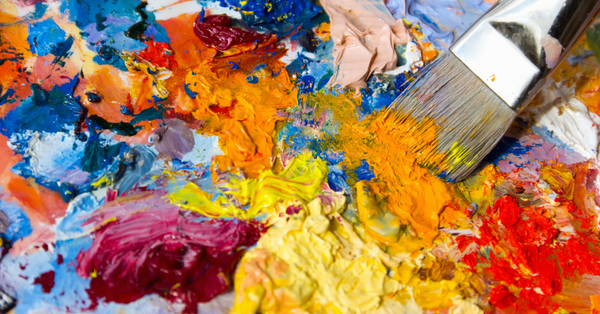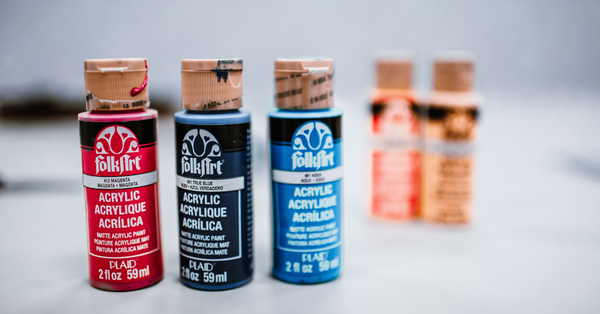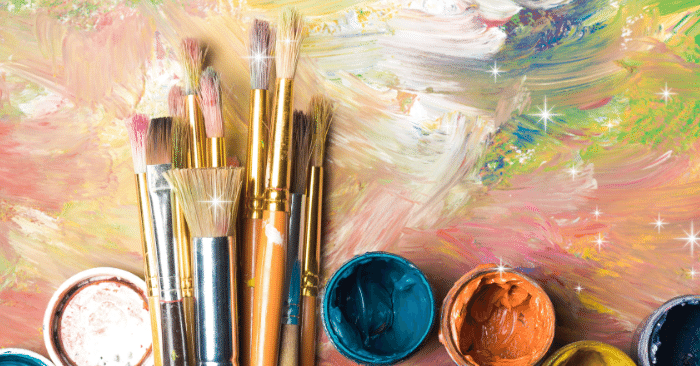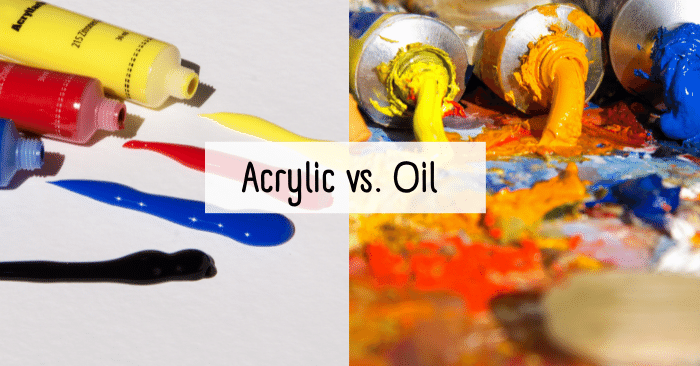
Oil paint is a timeless and beautiful medium that has been used by artists all over the world for centuries. One of its most appealing aspects is the extra drying time it requires, which allows the artist to continue working on a painting for long periods of time. However, it can also be frustrating for artists who are working under a deadline or want to include several layers of paint.
TABLE OF CONTENTS
- How long does oil paint take to dry?
- Why does oil paint take so long to dry?
- How can I tell if my oil paint is dry?
- How to make oil paint dry faster
How Long Does Oil Paint Take to Dry?
Without incorporating techniques to speed up the drying process, oil paints can take several days to dry to the touch and even longer, sometimes months, to dry all the way through.
Why Does Oil Paint Take So Long to Dry?
To dry, oil paints go through a process called oxidisation. Oxidation is a chemical reaction that happens when your oil paints are exposed to oxygen. The paint then reacts and hardens, which is what gives it the “drying” effect.
There are many factors that affect your oil painting’s drying time, including temperature, pigment, medium, layers, and thickness. Warmer temperatures, less layers, and thinner oil mixtures will always reduce drying time, while paint pigment, medium, and brand can have different effects.

How Can I Tell if My Oil Painting is Dry?
Dry to the touch does not always indicate a fully dried oil painting. You can check for complete dryness by using a razor blade or your thumbnail to lightly scrape the paint surface. Some of the paint will come off, regardless if it’s dry or not. However, pay attention to the consistency – if it comes off powdery, then you’ll know your painting is completely dry; if it comes off like a string or thread, then it is still drying.
How to Make Oil Paint Dry Faster
If you’re interested in working with oil paints but don’t want to wait forever for it to dry, then try some of the following techniques to speed up the drying process.
1. Paint in a Dry & Ventilated Area
First and foremost, make sure you are working and allowing your painting to rest in a dry, well-ventilated area. This is helpful for drying, and it’s an important consideration for your safety and to reduce harm to the environment as oil paint mediums emit highly toxic fumes.
Certain areas of your house are more humid, such as the bathroom or laundry room. Avoid these areas entirely and maybe even consider using a dehumidifier to reduce humidity. Less humidity and higher temperatures will surely promote quicker drying.
Furthermore, selecting a good spot for working and drying is about more than just oxidation. Oil paint mediums are highly toxic and should be kept away from pets, children, and other animals.

2. Paint on an Even Surface
This one might be a bit obvious, but it has to be said. Painting on an even surface can reduce the amount of cracks and crevices you’re forced to work with. When oil paint builds up in one area (like a crack), it results in bubbles of thick paint which can take an extremely long time to dry. By using an even surface, you can avoid this problem entirely.
3. Apply a Primer Layer
You can speed up the drying process before you even begin painting with oils. That’s right – by simply adding a primer layer to your surface, you can make the base of your painting more porous and take hours off the drying process. If you’re painting on canvas, try priming it with gesso or matte medium to help the paint bind more effectively to the surface. Specifically, glue-chalk gesso is the best primer for canvas surfaces.

4. Paint Thinner Layers (Fat Over Lean)
This is probably the most important factor that’s impacting your paint drying time. When working with oils, you’ll want to mix with a medium to achieve the appropriate thickness of paint. Your initial layers should have more thinner and less oil medium, while your final layers should have less thinner and more oil. This will help promote a thoroughly dried painting, from the bottom layer to the top layer, making it easier to apply layers as your project progresses.
5. Expose the Painting to Natural Light
Another way to speed up the drying process is to expose your painting to some natural light. This is a great method if you live in an area with warm temperatures and low humidity. However, do so with caution as too much direct sunlight can lead to paint whitening and cracking over time. Exposure to UV rays can significantly speed up the drying process, but your painting should be removed from the light immediately when it’s dry to the touch. Regardless, don’t leave your painting in direct sunlight for more than a few hours.

6. Use a Heat Gun
Heat guns are also effective ways to promote quick drying, but they should be used with care and caution. Follow these steps for best results:
How to use a heat gun to dry oil paint faster
- Set your heat gun temperature to no more than 130 degrees
- Any temperature higher than this could cause yellowing and cracking)
- Slowly move the gun over the painting, keeping it several inches away
- NEVER touch the surface of the painting with the heat gun
- Try aiming the gun towards the front of the canvas, as well as the backside of the canvas to promote thorough and complete drying
- Always use caution when working with heat
7. Underpaint with Acrylics
Acrylic paints dry much quicker than oil paints. By using acrylics for the underpaint, you can significantly reduce the amount of time required for drying without losing that oil paint look and feel on the top layers. You can paint oils directly on top of dried acrylics.

8. Choose Colors That Dry Faster
Certain pigments, or colors, will dry faster than others – so choose wisely! Here are some colors that will help speed up the drying process:
- Colors that contain lead including Lead White, Cremnitz White, Flake White
- Raw and Burnt Sienna
- Burnt and Raw Umber
- Prussian Blue
- Cobalt colors
- Manganese colors
TIP! If you’re a beginner looking for a good set of oil paints that won’t break the bank, we recommend this set of Paul Ruben‘s 20 Bright Oil Colors. They are thick, vibrant, great quality beginner oil paints, ideal if you are just getting into oil painting.
For professional-grade oil paints, my personal favourite are Winsor & Newton’s Oil Paints. I always recommend to get an additional white paint as you’ll always run out of this one first! In my experience, W&N oil paints (depending on how thickly you apply your paint) take between 3-4 days to fully dry.
9. Choose a Linseed-based Oil Paint
Instead of using safflower, walnut, or poppy oil-based paint, try using linseed oil-based paint, as it will dry at a quicker rate. While other oils produce great quality paints, they slow the drying process when compared with linseed products.
10. Use an Alkyd Drying Medium
Drying agents, like Liquin or Galkyd, are created to speed up the drying process. By adding a small amount into your paint mixtures, you can cut days off your drying time. They can also give your painting a glossy appearance.
Like with other mediums, however, Alkyd mediums are usually highly toxic and should be used with caution and the proper protective gear.
Frequently Asked Questions
Can you dry oil paint with a hair dryer?
Yes, you can dry oil paint with a hair dryer. The air from the hair dryer will help to speed up the drying process of the oil paint. Just be sure to keep the hair dryer six inches from your painting and keep it moving so that it does not overheat the area and damage the paint.
Remember, drying your oil painting is less about heat than it is about air flow. In order to dry, oil paint has to go through a process called oxidation. When the paint is exposed to oxygen, it hardens or “drys”. Heat won’t do much here, so you can leave the heat off your hairdryer.
Key takeaway
Painting with oils can be intimidating and challenging, especially for the new artist. While the final piece can be well worth the extra trouble, the long waiting times for drying can sometimes be unbearable. Plus, the toxicity of oil mediums adds another layer of concern for yourself and the environment. Luckily, there are many ways to safely and effectively use, dispose, and dry oil paintings. Try some of the above tips for your next project and eliminate some of the stress!




